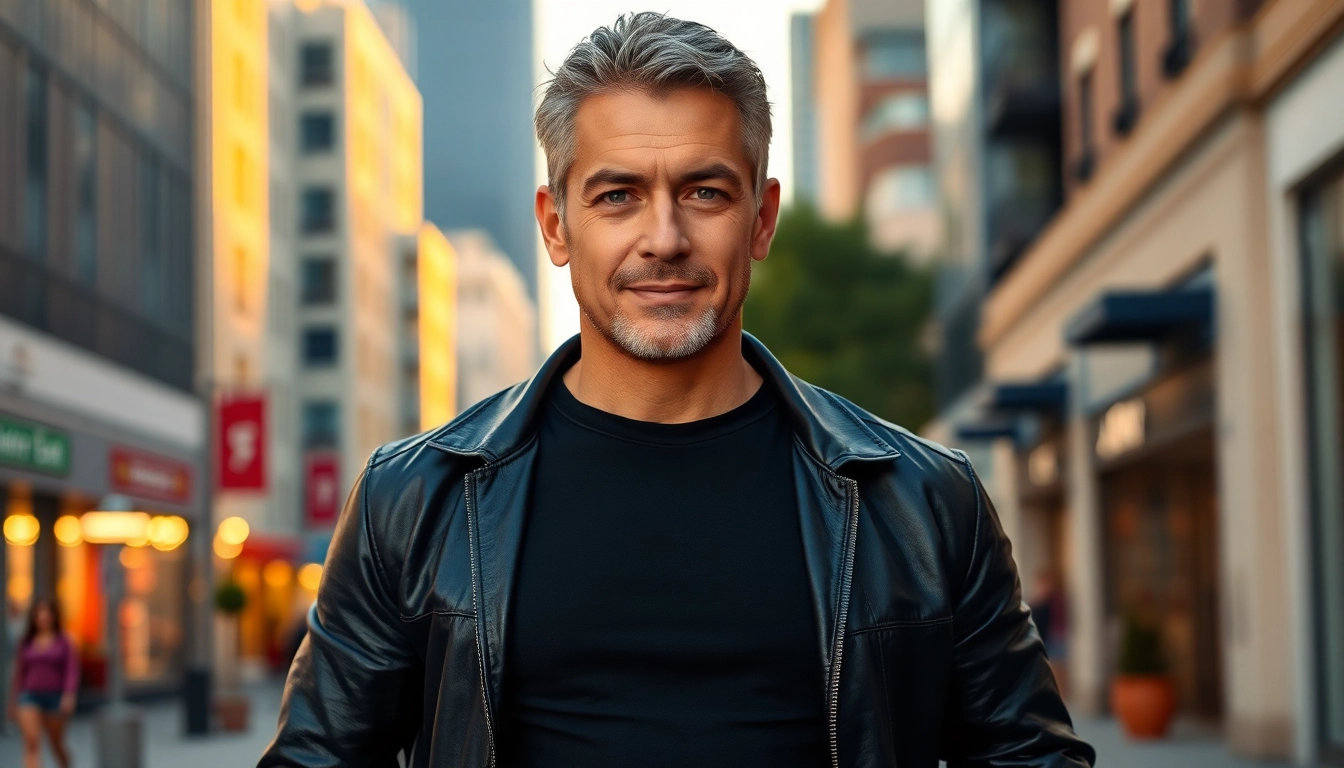Introduction to the Term DILF and Its Origins
The term DILF is a relatively recent addition to the lexicon of popular culture, but its roots and implications run deep within societal perceptions of attractiveness, masculinity, and maturity. Standing for “Dad/Daddy I’d Like to Fk,” this acronym is used colloquially and humorously to describe an older, often more mature man who exudes sex appeal. Interestingly, the label does not necessarily imply biological fatherhood; rather, it emphasizes qualities associated with maturity, confidence, and attractiveness that evoke a paternal allure.
The emergence of DILF as a popular term can be traced back to the wider cultural trends that celebrated youth, masculinity, and sexual desirability. The phrase gained traction shortly after the rise of MILF , which itself became a cultural phenomenon in the early 2000s, especially popularized by the American Pie film franchise. While MILF focused on maternal attractiveness, DILF shifted the focus onto older men who still possess youthful charm, physical appeal, and charisma. The term’s playful and provocative nature has made it a favorite in both casual conversations and online communities.
Initially, DILF was used humorously or as a compliment, often in a teasing manner among friends or fans. Over time, however, its usage expanded into mainstream media, internet culture, and even adult entertainment, reflecting changing perceptions of masculinity and attractiveness. The term’s popularity is also amplified by its visual and cultural associations, which include iconic characters, social media trends, and internet communities dedicated to celebrating the “daddy” archetype in various forms. For a deeper understanding of its cultural significance and origins, exploring the evolution of DILF helps reveal how society perceives age, attractiveness, and masculinity in contemporary culture.
Cultural Significance and Popular Media Representations
Daddy Halsin in Baldur’s Gate and Video Games
One of the most intriguing examples of the DILF persona in modern pop culture is the character Daddy Halsin from the popular role-playing video game Baldur’s Gate. Introduced as a powerful, protective druid, Halsin’s character is celebrated by fans for his commanding presence, mature demeanor, and rugged attractiveness. Despite his role as a guardian of nature and protector of the party, many players have affectionately dubbed him “Daddy Halsin” due to his strong, nurturing personality combined with his imposing physical appearance. This nickname reflects the broader internet trend of reappropriating gaming characters within the DILF archetype, emphasizing qualities like strength, maturity, and a paternal instinct that appeals to fans.
Halsin’s popularity illustrates how the DILF label extends beyond traditional media into gaming culture, where character design and personality traits align with societal ideals of masculinity. His portrayal as a protective, wise, and physically appealing figure makes him a quintessential example of how the DILF persona resonates across different entertainment platforms. This crossover showcases the evolving ways in which masculinity is celebrated and redefined in contemporary culture, especially in spaces that blend fantasy, strength, and nurturing qualities.
DILF Characters in Films and TV Shows
Beyond the realm of gaming, the archetype of the DILF has been vividly portrayed in films and television series, often highlighting older male characters who embody attractiveness and confidence. One of the earliest and most notable examples is in the 2009 comedy film American Pie Presents: The Book of Love. This movie, which is part of the American Pie franchise known for its humorous take on adolescent sexuality, introduces a character who is a father figure—Rob’s father—who is humorously depicted as a DILF. The film plays with the idea of the older, attractive man being desirable, blending comedy with a subtle nod towards societal perceptions of masculinity and attractiveness in older men.
Another prominent example is Fred Andrews from the hit Netflix series Riverdale. Portrayed by actor Luke Perry, Fred Andrews became an iconic DILF figure for many fans. His character’s rugged charm, maturity, and paternal role as the father of the protagonist Archie made him a symbol of the mature, attractive man who exudes confidence and warmth. Fred’s portrayal as a grounded, dependable figure who also possesses a certain rugged attractiveness contributed to his status as a DILF icon, especially among younger audiences.
These media representations highlight how the DILF archetype is often associated with characters who combine attractiveness with a sense of responsibility, strength, and maturity. They serve as modern embodiments of the “older man” ideal—someone who is both desirable and dependable—challenging stereotypes that equate attractiveness solely with youth.
The Role of Internet Culture and Social Media
DILFs of Disneyland Instagram Account
The advent of social media has significantly amplified the visibility and cultural significance of the DILF phenomenon. One prominent example is the Instagram account DILFs of Disneyland. With over 300,000 followers, this account curates photos of older men enjoying family outings at Disneyland, capturing candid moments of fathers and paternal figures engaging in joyful, family-oriented activities. The account’s popularity underscores how the DILF label has evolved from a humorous or adult-oriented term into a celebration of confident, attractive older men embracing their roles as fathers or paternal figures in a lighthearted, positive way.
The content shared by DILFs of Disneyland showcases a different facet of the DILF persona—one rooted in warmth, confidence, and the everyday appeal of mature men. It also reflects a broader societal appreciation for fatherhood, maturity, and the attractiveness of men who embody these qualities. The account’s success demonstrates how internet culture has democratized the DILF archetype, making it accessible and relatable for a wide audience, celebrating mature masculinity in a variety of contexts.
Reddit Communities and Online Discussions
Online platforms like Reddit have played a crucial role in fostering communities dedicated to DILF appreciation. The subreddit r/DILFs is a prime example, gathering nearly 100,000 members who share images, videos, and discussions centered around the DILF concept. This NSFW community highlights how the term has become a cultural phenomenon beyond mainstream media, with users engaging in conversations about attractiveness, masculinity, and personal preferences related to older, confident men.
Reddit discussions often explore topics such as the qualities that make a man a DILF, personal experiences, and sharing of images that celebrate mature masculinity. The community’s openness and diversity reflect society’s shifting attitudes towards age and attractiveness, emphasizing that confidence and charisma often outweigh youth in defining desirability. The online DILF community exemplifies how digital spaces foster niche cultures and subcultures that celebrate specific archetypes, breaking traditional notions of beauty and masculinity.
This digital wave has also influenced mainstream conversations, making the DILF archetype more normalized and even aspirational. It demonstrates how internet culture continues to shape perceptions of masculinity, blending humor, admiration, and sexuality into a multifaceted cultural phenomenon.
The Evolution of DILF in Pornographic and Mainstream Content
The DILF archetype has found a significant presence within the adult entertainment industry, paralleling the rise of the MILF phenomenon. As a widely searched tag, DILF content caters to an audience that appreciates older, masculine men who exude confidence and physical appeal. The adult industry’s embrace of the DILF concept reflects broader societal acceptance of diverse expressions of sexuality and attraction.
In mainstream media, the DILF persona has transitioned from niche humor to a more normalized archetype. Films, TV shows, and digital content increasingly feature older male characters portrayed as desirable, confident, and sexually appealing. This shift challenges outdated stereotypes that equate attractiveness with youth, instead emphasizing maturity, experience, and self-assuredness as desirable traits.
Furthermore, the rise of the DILF in adult content has influenced how society perceives masculinity and aging. It promotes the idea that attractiveness does not decline with age but can instead evolve, embracing qualities like wisdom, stability, and strength. This evolution aligns with a broader cultural movement towards positive aging and redefining masculinity beyond superficial standards.
The Impact of the DILF Trend on Modern Masculinity and Attractiveness
The popularity of the DILF archetype has profound implications for how masculinity and attractiveness are perceived today. Traditionally, societal standards often equated youth with desirability, but the DILF phenomenon challenges this notion by emphasizing maturity, confidence, and a sense of self-assuredness as equally, if not more, attractive qualities.
Men embracing the DILF identity are often seen as embodying the modern ideal of masculinity—one that values emotional intelligence, strength, and maturity. This shift encourages older men to embrace their age and confidence rather than feeling pressured to conform to youth-centric standards. It also offers a more inclusive and nuanced understanding of attractiveness that celebrates diversity in age, body type, and personality.
Furthermore, the DILF trend influences societal narratives around aging, promoting the idea that confidence and self-care can enhance attractiveness at any age. It encourages men to view aging as an opportunity for growth and self-empowerment, fostering a healthier, more positive outlook on masculinity and aging.
From a cultural perspective, the rise of DILF icons in media and social platforms helps normalize mature masculinity, inspiring men to embrace their age and confidence as sources of attractiveness. This paradigm shift has the potential to redefine beauty standards and promote a more realistic, inclusive view of what it means to be desirable at any age.
Future Trends and How the DILF Persona Continues to Influence Popular Culture
The DILF archetype is poised to evolve further as society continues to challenge stereotypes about age and attractiveness. Future trends suggest that the celebration of mature masculinity will become even more prominent across various media platforms, including television, film, gaming, and social media.
As representation of older men in media increases, we can expect to see more nuanced portrayals that emphasize not only physical attractiveness but also emotional depth, wisdom, and leadership qualities. The rise of diverse DILF figures—spanning different ethnicities, body types, and backgrounds—will help broaden societal perceptions of masculinity, making the archetype more inclusive and representative of real-world diversity.
In the digital realm, platforms like TikTok, Instagram, and emerging social media sites will likely foster new communities that celebrate mature masculinity, further normalizing the DILF persona. These spaces will continue to challenge ageist stereotypes and promote positive aging narratives, empowering men to embrace their maturity confidently.
Additionally, the influence of the DILF trend extends into fashion, beauty, and lifestyle industries, which increasingly market products aimed at older men seeking to maintain their attractiveness and confidence. This convergence of media, culture, and commerce will reinforce the idea that attractiveness is timeless and that every age has its own appeal.
Overall, the future of the DILF archetype is bright, with its core message—confidence, maturity, and self-assurance—resonating even more strongly across society. As cultural attitudes shift, the DILF persona will continue to inspire a more inclusive and positive view of masculinity and aging, shaping the landscape of popular culture for years to come.
Conclusion: Embracing Maturity and Confidence in the DILF Identity / Understanding the DILF Phenomenon: From Pop Culture to Internet Trends
The DILF phenomenon exemplifies how societal perceptions of attractiveness and masculinity are evolving. Originally emerging from playful slang and pop culture references, the term has grown into a multifaceted archetype celebrated across media, internet communities, and mainstream entertainment. It challenges outdated stereotypes that equate desirability solely with youth, instead highlighting qualities like confidence, strength, and maturity that make older men attractive and desirable.
From iconic characters in films and TV shows to vibrant social media communities like DILFs of Disneyland and Reddit’s r/DILFs, the archetype has gained widespread recognition. Its influence is visible in the increasing representation of mature masculinity in media and the adult entertainment industry, reflecting a broader societal acceptance of aging as a positive attribute.
As society continues to shift towards embracing diversity in age and appearance, the DILF persona will remain a symbol of confidence, self-assurance, and attractiveness at any age. It encourages men to celebrate their maturity and embrace their unique appeal, fostering a healthier and more inclusive view of masculinity.
For those interested in exploring this cultural phenomenon further, the dilf ai provides valuable insights into the evolving landscape of masculinity and attractiveness. As the trend continues to grow, understanding the DILF archetype offers a window into changing societal norms and the broader appreciation of mature, confident men in modern culture.

